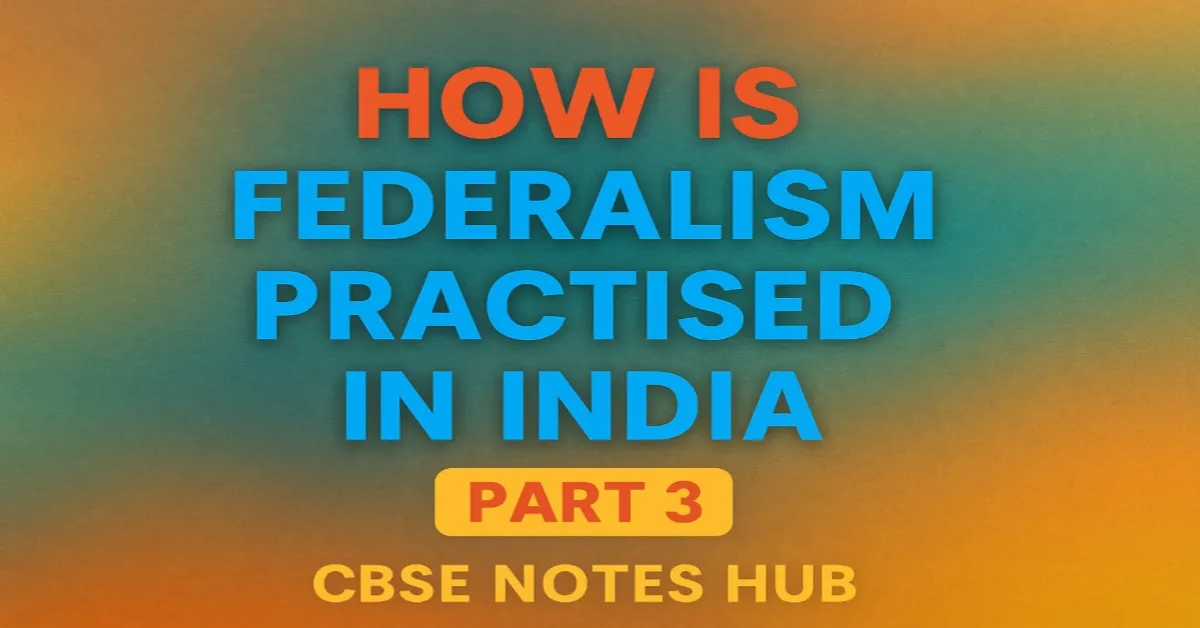This post helps you understand how federalism has been practised in India since independence. It also explains the laguage policy adopted by India , the creation of linguistic states and their outcomes. In addition, it discusses the period when the central government was more powerful and the effects of coalition governments.
Federalism – Class 10 Notes (Part 3)
How is Federalism Practised in India?
- Nature of democratic politics is the main reason for success of federalism.
Steps Towards Federalism
1. Linguistic States
- People who speak the same language live in the same state.
- Examples: Maharashtra, Andhra Pradesh, Tamil Nadu, Punjab.
- States also created based on culture, ethnicity, or geography: Nagaland, Uttarakhand, Jharkhand.
Creation of Linguistic States
- Made the country more united.
- Made administration easier.
2. Language Policy
- Constitution doesn’t recognise any language as a national language.
- Official Language: Hindi.
- Use of English for official purpose: Till 1965.
- Non-Hindi states like Tamil Nadu demanded continuation of English.
- Movement in favour of English took a violent form in Tamil Nadu.
- Central govt agreed to continue English along with Hindi.
- State governments permitted to use their own language.
- 22 scheduled languages listed in the 8th Schedule.
- Candidates in central govt exams can use any scheduled language.
- Census 2011: 121 major languages in India.
- Hindi is the mother tongue of 44% Indians.
📘 Must Read:
📌 Federalism in India – Class 10 Notes (Part 2)
3. Centre-State Relations
a) Single Party Rule (After Independence)
- Same party ruled both Centre and State.
- States had limited rights.
- States had to follow Centre’s directives.
b) Era of Rival Politics
- Different parties ruled at Centre and State.
- Centre misused power to dismiss state governments using President’s Rule.
- It undermined federalism.
c) Era of Coalition After 1990
- Rise of regional political parties and coalition governments.
- New culture of power sharing.
- Respect for autonomy of state governments.
Coalition Government
- Formed by two or more political parties coming together.
Judgement of Supreme Court
- Made it difficult for the central government to arbitrarily dismiss state governments.
Source: NCERT
📘 Also Read:
📌 Land Degradation, Alluvial and Black Soils – Class 10 Notes
📌 Power Sharing – Class 10 Important Questions and Answers

